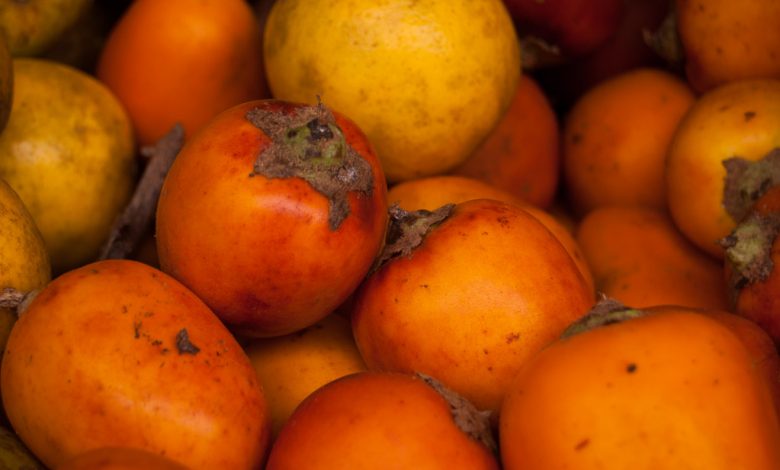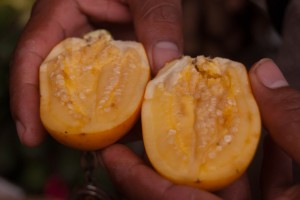Cocona, An Unusual Yet Delicious Amazonian Fruit

Peru is a world of fruit and vegetables, many of which are not well known outside its regions. One of these looks like a persimmon and yet is related to the tomato. Commonly used in the lowland areas of Cuzco and nearby Departments (States) it is only recently getting known in LIma and in the world outside Peru. Yet, the fruit has flavor and culinary utility that should make it much wider known.
The cocona is a solanum (solanum sessiliflorum) member of the rich genus that includes tomatoes, potatoes, eggplants and more. It grows to around three inches long and is dark yellow to orange. Its skin is firm, much firmer than a tomato. It’s flesh though is yellowish, filled with seed sections reminiscent of its much more popular cousin. It tastes pleasantly tart and very fruity, making it a good complement to many other foods.
The popular Peruvian foodie site Yanuq has begun to recognize the cocona, although it only has four recipes for it. All of them stem from Peru’s Amazon region, which includes the Cuzco lowlands and include its use with grilled meat, in a chicken stew, as a juice, and as hot sauce.
Marketers are exploring the possibility of adding cocona to the shelves of Peruvian coastal Peruvian supermarkets. They know that immigrants from Peru’s Amazon basin seek it out with enthusiasm and they wonder if other Peruvians will begin to purchase it if offered.
Reportedly, cocona juice is exported to Europe. The fruit is also argued to be very nutritious and hence of potential use for commercial baby food.


Perhaps the most mentioned use of cocona, in my experience, is in a hot sauce commonly found on tables in the hot lands of the jungle. When you taste it, the citrusy notes of the local hot peppers called ojo de pez, fish eye, in Puerto Maldonado and charapa in much of Peru meld with the slightly sour taste of the cocona. There is a sharp bite of heat and then your mouth is overwhelmed with the citrus and peach flavors.
At its most basic, cocona reminded me of tomatillos, the husk tomatoes, widely used in Mexican cuisine. Though only distantly related to the solanum, it performs a similar role of giving an enjoyable context for the bite of hot peppers and complimenting roast meats of all sorts. Besides being a very different fruit than the tomatillo, the cocona produces a sauce that is more like one that has the bit of sour from the tomatillos with the sweet richness of a good, ripe mango. Indeed the mango sauces of Mexico reproduce that piece of the cocona sauce, but miss its tartness.
After trying the cocona hot sauce, simply called ají, in Puerto Maldonado, I look forward to not only making that hot sauce but also trying it in other recipes.
In Puerto Maldonado I was told that the hot sauce was a simple combination of cocona flesh and seeded fish eye peppers, along salt. These were then ground in to a sauce, either on a stone or in a blender. Some people also added finely mined herbs, such as cilantro or sach’a culantro (often spelled sacha culantro).

Of course, nothing is every so completely simple. The art is in the proportions and in the grinding.
The people of Puerto Maldonado, if my short visit means anything, prefer a yellow color for their sauce, not the bright yellow of the coastal aji amarillo peppers, but a milder and more beige yellow. As a result they balance the colors of the peppers and cocona accordingly.
That aesthetic seems to guide the preparation. I found their hot sauce wonderful. It was not too spicy nor too fruity, but a perfectly balanced combination that was good in itself. I particularly enjoyed the way they always have a small bowl of hot sauce on the table at almost every meal.
You can also make a relish of finely diced cocona fruit, red onion, hot peppers accompanied with a bit of salt to taste.




